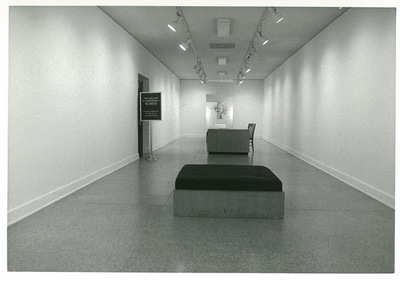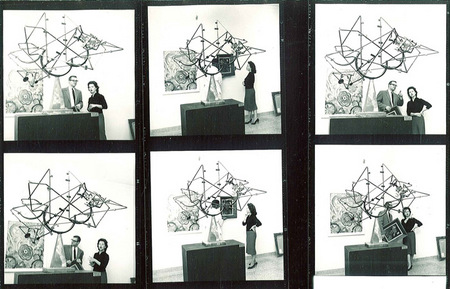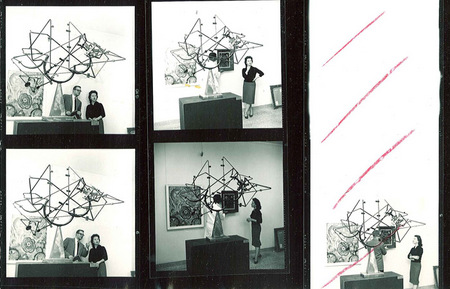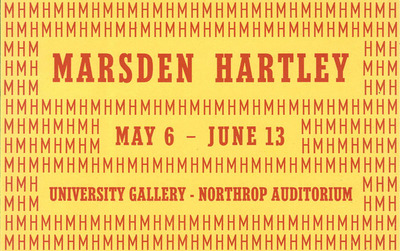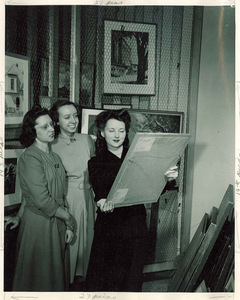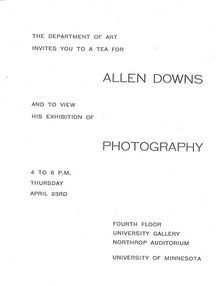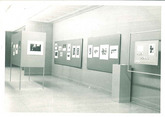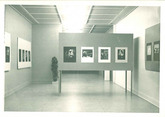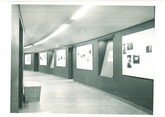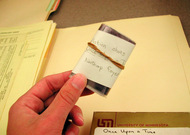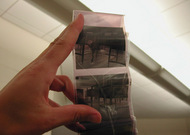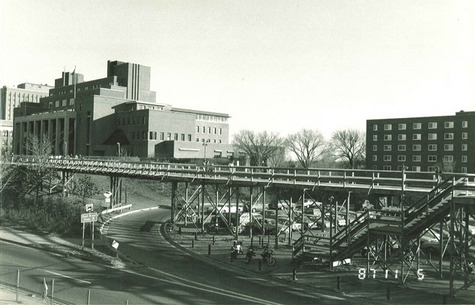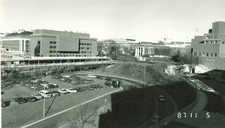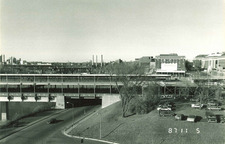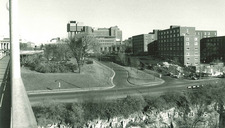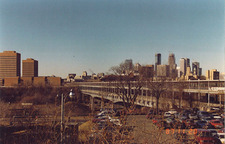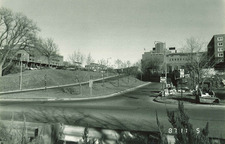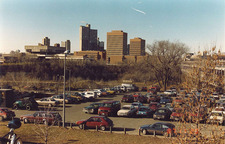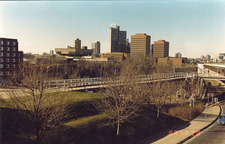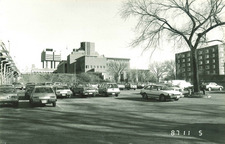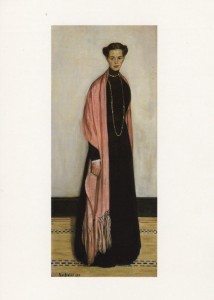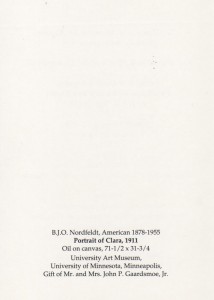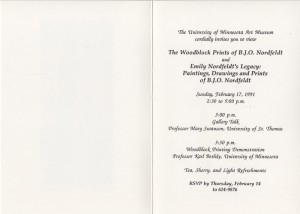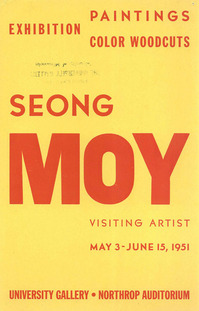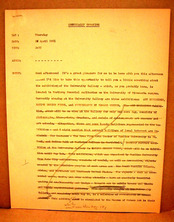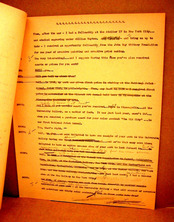As I walked along the wood floors of the recently re-opened Weisman Art Museum, my pace quickened (though still within an appropriate pace for an art gallery) as I directed my strides towards the new Woodhouse Family Gallery. This gallery features WAM’s collection of contemporary American artwork and includes works of the artists Marsden Hartley, B.J.O. Nordfeldt, Alfred Maurer and Georgia O’Keeffe, to name a few.
While each of these artists deserves an appreciation (and a blog post), my sense of eagerness and hurried pace to this gallery was for one reason, and one reason only: Star Cage.
In processing the WAM archival collection over the past 8 months, we have uncovered many records detailing the exhibition of David Smith’s sculpture, “Star Cage.” Though the records have served to build intrigue amongst the processors, “Star Cage” itself has remained illusive and distant (as represented in this undated photo of the gallery spaces in Northrop Auditorium):
As the piece has become a popular representation of Smith’s work, it is frequently loaned to other museums, and not until recently, for the occasion of the re-opening of WAM, was it returned to Minneapolis to be displayed in the museum. The sculpture was the first piece to be acquired for the University Gallery’s John Rood Sculpture Collection, (established by the long-time University art department faculty member and sculptor for which it is named).
See what we have uncovered about “Star Cage” over the past several months, and hurry over to WAM’s new galleries to join me in some stargazing…
A previous blog post details the folder titled, “Minneapolis Sculpture,” which includes a newspaper clipping with a photograph of the sculpture next to Joan Mondale at the Vice President’s Residence in Washington D.C., where the work was exhibited in 1977.
Yet another post details a photo contact sheet found of the work in a 1959 exhibition of Japanese prints.
Box 3 contains a contact sheet, likely of promotional photos taken of the gallery, with “Star Cage” prominently featured alongside gallery curator, Betty Maurstad.
